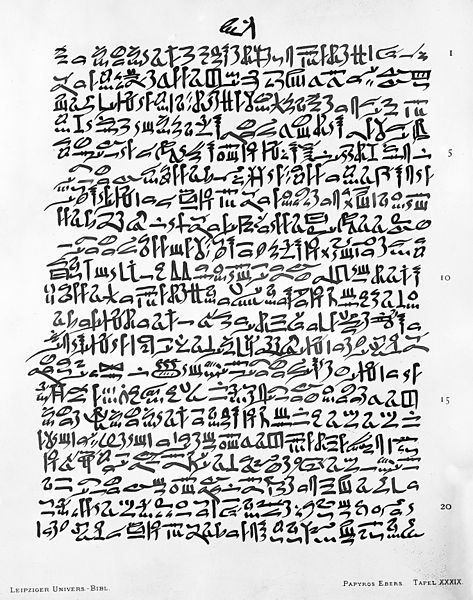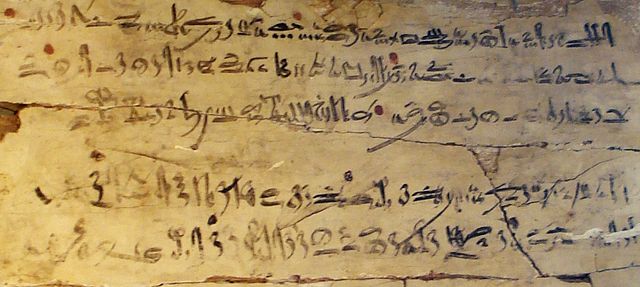Hieratic is the name given to a cursive writing system used for Ancient Egyptian and the principal script used to write that language from its development in the third millennium BCE until the rise of Demotic in the mid-first millennium BCE. It was primarily written in ink with a reed brush on papyrus.
Transcribed papyrus, c. 1500 BC
One of four official letters to vizier Khay copied onto fragments of limestone, an ostracon
An exercise tablet with a hieratic excerpt from The Instructions of Amenemhat (dated to the eighteenth dynasty reign of Amenhotep I, c. 1514–1493 BC) reads: "Be on your guard against all who are subordinate to you... Trust no brother, know no friend, make no intimates."
Cursive is any style of penmanship in which characters are written joined in a flowing manner, generally for the purpose of making writing faster, in contrast to block letters. It varies in functionality and modern-day usage across languages and regions; being used both publicly in artistic and formal documents as well as in private communication. Formal cursive is generally joined, but casual cursive is a combination of joins and pen lifts. The writing style can be further divided as "looped", "italic", or "connected".
Example of classic American business cursive handwriting known as Spencerian script, from 1884
Looped cursive, as taught in Britain in the mid-20th century
Half of the National Anthem of Bangladesh, written in cursive Bengali
An English letter from 1894, written in Continuous Cursive







